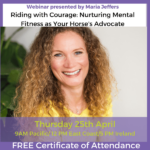
Contributed by Eidwenn Skellon
Contributing Factors to Over Developed Brachiocephalicus Muscles
So what might cause this important muscle to become sore or over used?
- While we don’t often consider saddle fit to be a culprit for neck soreness, restriction to the shoulder may result in the horse compensating and over using his brachiocephalicus muscle.
- In horses with poor or incorrect posture, who lack development of their topline, the brachiocephalicus muscle compensates by supporting the neck from below.
- Compensation for pain or weakness in the neck or body can result in over reliance on the brachiocephalicus muscle.
- Studies have found that asymmetries in rider rein contact can also lead to tension and tenderness of the muscle. Horses ridden with one contact stronger than the other were found to have more soreness through the brachiocephalicus muscle on one side.
- Stereotypical behaviors such as ‘crib biting’ can also result in soreness through this muscle as the horse is repeatedly flexing and tensing the neck.
- Hoof imbalances or foot pain often impact on the health of this muscle due to compensatory movement.
- Dental issues or restrictions of the jaw can also impact on its function.
- Horses who carry themselves in a hollow outline with a high head carriage, often become very sore through this muscle, commonly presenting with sensitivity at the poll.
- Incorrect training where the horse is ridden in a hyperflexed position, (bringing the nose behind the vertical) is sadly still used as a method of creating an exaggerated extension of the forelimb by over training the brachiocephalic muscle.
Recommendations for Horses with Over Developed Brachiocephalicus Muscles
If you feel your horse may be restricted or sore in this area, it is important to contact a qualified body worker to help release the muscle tension before further compensatory movement develops. A careful training regime may be needed to enable them to learn how to engage the correct postural muscles and build core strength to avoid the risk of injury.
Next part in this series coming soon!



